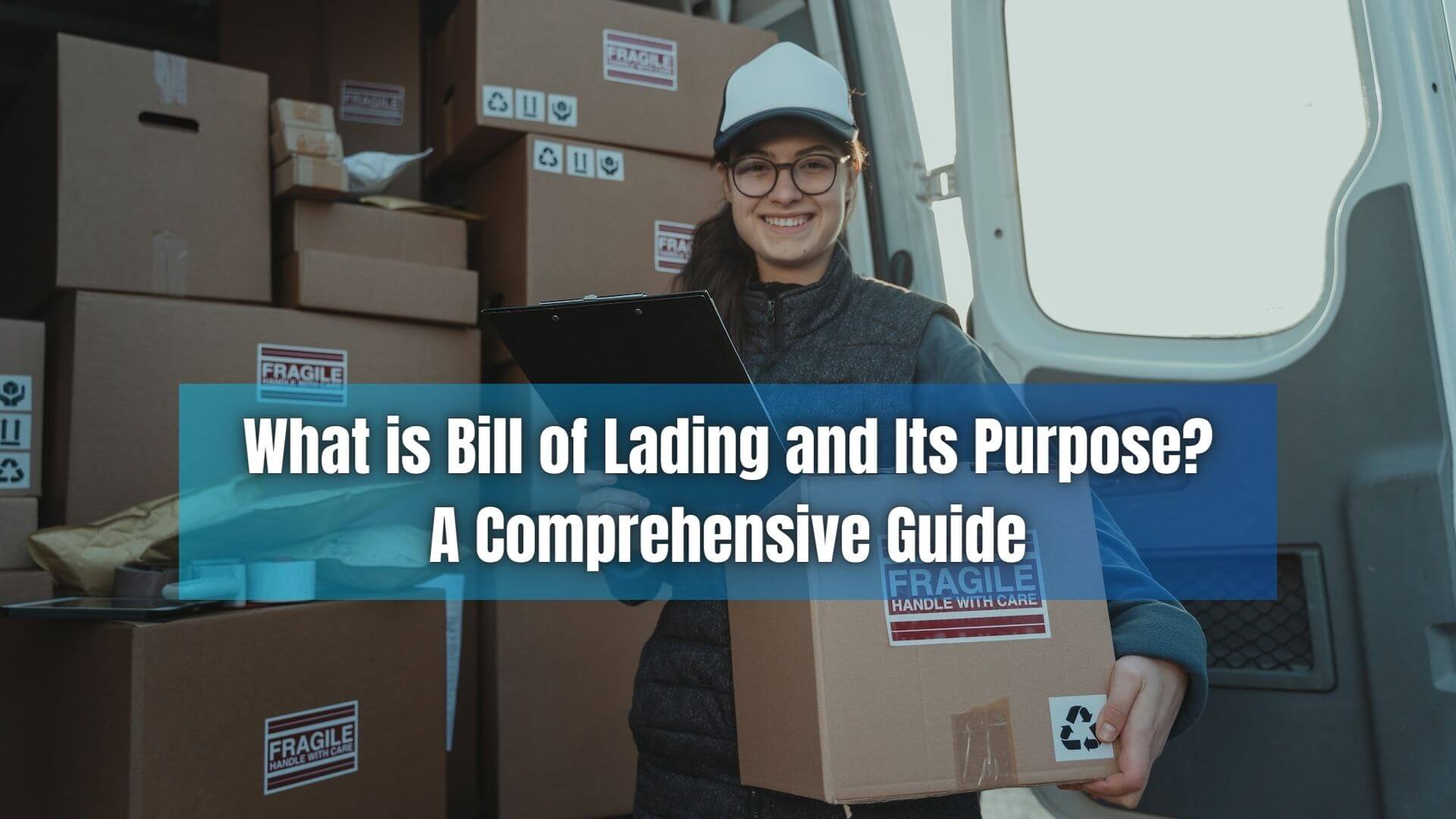Understanding the importance and functionalities of a bill of lading is fundamental in the shipping and logistics industry. This legal document holds significant value as it outlines important details of the transported goods. Acting as a shipment receipt, a bill of lading is indispensable during the delivery of goods at a predetermined destination.
Whether by sea, air, or land, this authoritative document accompanies the shipped commodities and is endorsed by a representative from the carrier, the shipper, and the receiver. This comprehensive guide aims to shed light on the purpose and applications of a bill of lading in the logistics industry.
Table of Contents
ToggleWhat is Bill of Lading?
A Bill of Lading (BoL) is a legally binding document issued by a carrier to a shipper that stipulates the type, quantity, and intended destination of the goods being transported. This document validates the contract between the shipper and the carrier and provides:
- Irrefutable proof of the carrier’s receipt of the shipper’s goods.
- Serving as a document of title.
- A contract of carriage.
- A receipt for goods.
The BoL must be signed by authorized representatives from the carrier, shipper, and receiver, ensuring transparency and accountability throughout transportation. As such, the BoL is a critical component of the supply chain and plays an integral role in global trade.
Understanding Bill of Lading
To fully comprehend the functionality of a bill of lading, consider the following key aspects:
- A Contract of Carriage: The bill of lading serves as a binding contract between the shipper and the carrier. It outlines the terms and conditions for the transportation of goods, including the route, destination, and transportation mode.
- Receipt of Goods: A bill of lading functions as a receipt. When the carrier receives the goods from the shipper, a bill of lading is issued to acknowledge the receipt. This ensures accountability on the carrier’s part.
- Document of Title: The bill of lading also plays an essential role in the ownership of goods. It serves as a document of title, allowing the holder to sell or otherwise dispose of the goods while they are in transit.
- Evidence of the Condition of Goods: By inspecting the goods at the time of loading, the carrier can record the condition of the goods on the bill of lading. This can be useful if there is a dispute about damage to the goods during transit.
- Instructions for the Carrier: The bill of lading provides detailed instructions for the carrier on how and where to deliver the goods. It includes information such as the name and address of the receiver, the type of goods, and any special handling instructions.
Types of Bills of Lading
As we further delve into Bills of Lading (BoL), discussing the various types is pertinent. Every kind of BoL has specific characteristics, use cases, advantages, and limitations. Understanding these differences is crucial for logistics management, particularly in choosing the right BoL that aligns with specific transportation requirements.
Inland Bill of Lading
This type of BoL is used to transport goods within a country. It typically involves transit by land or inland waterways. The document serves as a contract between the shipper and the carrier and includes details about the goods, destination, and mode of transport.
Ocean Bill of Lading
An ocean BoL, as the name implies, is used for shipments transported overseas via sea. It’s a key document in international trade, enabling the shipping process to remain organized and transparent.
Through Bill of Lading
A through BoL is used when transporting goods involves multiple modes of transport—such as road, air, and sea. This document covers all transportation modes from the point of origin to the final destination.
Negotiable Bill of Lading
This type of BoL allows the transfer of ownership of goods during transit. It’s issued to the order of a specified party and can be transferred by endorsement and delivery.
Nonnegotiable Bill of Lading
Contrary to the negotiable BoL, a nonnegotiable BoL does not allow the transfer of ownership of goods while in transit. It’s issued to a named consignee, the only person authorized to receive the shipment.
Claused Bill of Lading
A claused BoL, also known as a dirty BoL, includes notations about defects in the goods or packaging at the time of loading. This can impact the receiver’s willingness to accept the delivery and may influence the payment terms.
Clean Bill of Lading
A clean BoL is the opposite of a claused BoL. It contains no notations or clauses that indicate any defect in the goods or the packaging. It assures the receiver that the goods were in good condition when loaded onto the ship.
Uniform Bill of Lading
The uniform BoL is a standardized document used across the entire industry. It’s governed by rules recognized by all participating parties, ensuring consistent terms and conditions and smoother transactions.
What’s the Purpose of a Bill of Lading?
A bill of lading primarily serves three crucial purposes in the shipping sector:
- A receipt for goods shipped
- Evidence of the contract of carriage
- A title document
- A receipt is an acknowledgment provided by the carrier once goods have been given to them for transport, confirming the goods’ quantity and condition. The bill of lading is a credible and legally binding document if any dispute arises regarding the quantity or state of the goods shipped.
- As evidence of the contract of carriage, the bill of lading embodies the terms and conditions under which goods are moved from one place to another. It outlines the responsibilities and liabilities of both the shipper and the carrier, ensuring that all parties are aware of what is expected of them.
- As a document of title, the bill of lading grants ownership of the goods to a named party, usually the shipper, receiver, or a third-party consignee. It can be transferred, allowing the title of goods to change hands during transit—a particularly crucial feature in international trade where long transaction periods may be long.
A bill of lading provides transparency, security, and accountability in the shipping process, making it a vital tool in global trade.
Why is a Bill of Lading Important?
The bill of lading is a pivotal document in logistics and transportation, orchestrating a seamless and transparent flow of goods. It brings a sense of orderliness, accountability, and legal protection to the otherwise chaotic and risk-prone world of shipping. Here are five key reasons explaining why a bill of lading is essential:
Legal Protection
A bill of lading is a legally binding document that stipulates the terms and conditions of shipping and serves as a contract between the shipper and the carrier. It provides legal protection to all parties involved, holding them accountable for their respective responsibilities.
Evidence of Shipment
The bill of lading stands as proof of shipment, confirming that the carrier has received the goods from the shipper in a specific condition. This is important in case of disputes or claims regarding the delivery or condition of goods.
Ownership Title
A bill of lading can act as a title of ownership, allowing the holder to sell, dispose of, or otherwise transfer the rights of the goods while they’re in transit. This is particularly essential in international trade, where the transfer of goods ownership often happens during the shipment phase.
Delivery Instructions
The bill of lading provides detailed instructions to the carrier on handling and delivering the goods. This includes the name and address of the receiver, type of goods, quantity, and any special handling instructions, thus ensuring the correct and timely delivery of goods.
Financial Transactions
In trade finance, the bill of lading is pivotal for financial transactions. Banks often require this document to release payments to the exporter under a Letter of Credit (LC). It assures the bank that the goods have been shipped as per the terms of the LC.
Elements of a Bill of Lading
A Bill of Lading (BoL) comprises several essential elements that collectively provide comprehensive information about the shipment. These components ensure clarity, legal protection, and smooth execution of transportation duties. Below are key elements typically found in a BoL:
Shipper’s Information
This includes the name and address of the shipper, who usually owns the goods being transported. The shipper is responsible for starting the shipping process and providing the necessary information for the BoL.
Consignee’s Information
The consignee’s details are also crucial. This section includes the name and address of the receiver to whom the goods are being transported.
Carrier’s Information
The carrier’s information section outlines the details of the organization or individual responsible for transporting the goods.
Description of the Goods
This section details the nature of the goods being transported, such as the type, quantity, weight, and other relevant details. It can also include special handling instructions, if any.
Freight Charge Terms
This part of the BoL stipulates who will be responsible for freight charges. It could be the shipper, the consignee, or a third party.
Date and Place of Receipt
The date and place where the goods were handed over to the carrier are also essential elements of the BoL. These details are especially important for tracking and accountability.
Port of Loading and Discharge
The BoL should also specify the point of embarkation (port of loading) and the point of termination (port of discharge).
Signature
The BoL must bear the signatures of the authorized representatives of the shipper, the carrier, and the consignee. This seal of approval makes the document legally binding.
These elements make up a comprehensive Bill of Lading, providing a clear roadmap for the shipping process and offering protection and accountability for all parties involved.
Bill of Lading Example
Let’s dive into a practical example to solidify your understanding of the bill of lading. Consider a scenario where a business, “Company A,” is shipping a consignment of machine parts to “Company B,” an overseas customer. Here’s a simplified outline of what a Bill of Lading in this context might include:
Bill of Lading Example
- Bill of Lading Number: 123456
- Shipper: Company A
- Consignee: Company B
- Notifier: Company B
- Document Issued By: XYZ Carrier
- Place of Receipt: Excelsior, Minnesota, USA
- Port of Loading: Port of Excelsior, USA
- Port of Discharge: Port of London, UK
- Place of Delivery: London, UK
- Description of Goods: Machine Parts
- Quantity: 10 crates
- Gross Weight: 1,100 lbs.
- Freight Payment: To be paid by the consignee (Company B)
- Date of Issue: 1 October 2023
- Signatures: Authorized signatures from the shipper (Company A), the carrier (XYZ Carrier), and the consignee (Company B).
This is a simplified example—an actual Bill of Lading will contain more specific information, including special handling instructions, any additional charges, and details about the container (if applicable). Regardless, this sample provides a fundamental understanding of the essential elements typically included in a Bill of Lading.
Bill of Lading Vs. Invoice
The Bill of Lading (BoL) and Invoice are two fundamental documents in the shipping and trade sector. While both play crucial roles, they serve different purposes and contain unique information. Let’s delve into a detailed comparison to understand their functionalities better.
Definition
Bill of Lading
- A Bill of Lading is a legal document issued by a carrier to a shipper that provides detailed information about the type, quantity, and destination of the goods being carried.
- It serves as a receipt for the shipped goods, evidence of the contract of carriage, and a document of title.
Invoice
- On the other hand, an invoice is a commercial document issued by a seller to the buyer that indicates products or services provided and the amount due for these.
- It serves as a demand for payment and becomes a record of sale once paid.
Information Included
Bill of Lading
- The BoL includes the shipper’s, carrier’s, and consignee’s information, a description of the goods, freight charge terms, date and place of receipt, port of loading and discharge, and signatures from authorized representatives.
Invoice
- An Invoice includes the seller’s and buyer’s details, a description of the products or services sold, quantity, prices, the date of sale, payment terms, due date, and total amount due.
Purpose
Bill of Lading
- The BoL primarily serves as a contract between the shipper and the carrier, a receipt for goods shipped, and a document of title.
- It ensures accountability and transparency in the shipping process.
Invoice
- An Invoice primarily serves as a demand for payment from the buyer and a record of the sale once the payment has been made.
- It enables the tracking of sales and revenue for the seller and helps the buyer to understand their purchases.
Understanding the differences and connections between these two documents is essential for anyone involved in shipping and trade. Both documents are critical in ensuring smooth, transparent, and legal transactions.
Why Use ReliaBills for Invoicing?
No matter what your business is, it’s vital to have a reliable invoicing system in place. ReliaBills offers an affordable, efficient, and secure invoicing solution for small businesses, including shipping companies. Our comprehensive billing solution provides everything you need to seamlessly create, track, and manage invoices and payments.
ReliaBills is a cloud-based invoicing and billing software designed to automate payment processes, reduce administrative overhead, and streamline payment processing duties. ReliaBills’ payment processing features include automated recurring billing, payment tracking, payment reminders, online payment processing, and much more!
It also provides valuable tools that help manage customer information, monitor payment records, and create proper billing and collection reports. As a result, invoice and billing management are simple and convenient. You also get access to active customer support, ready to assist you whenever you need help.
Get started with ReliaBills for free today! And if you want more features, you can upgrade your account to ReliaBills PLUS for only $24.95 monthly! Subscribing to ReliaBills PLUS will give you access to advanced features such as automatic payment recovery, SMS notifications, custom invoice creation, advanced reporting, and more!
With ReliaBills, you have an all-in-one solution to your invoicing and payment processing needs. Our convenient solutions will enable you to focus more on running and growing your business. Get started today!
How to Create a New Invoice Using ReliaBills
Creating an invoice using ReliaBills involves the following steps:
Step 1: Login to ReliaBills
- Access your ReliaBills Account using your login credentials. If you don’t have an account, sign up here.
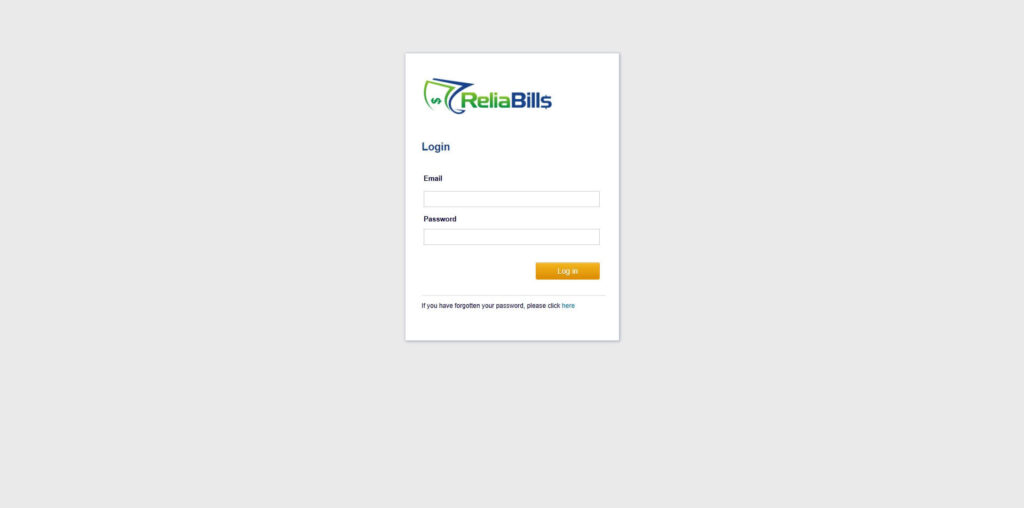
Step 2: Click on Invoices
- Navigate to the Invoices Dropdown and click on Invoices.
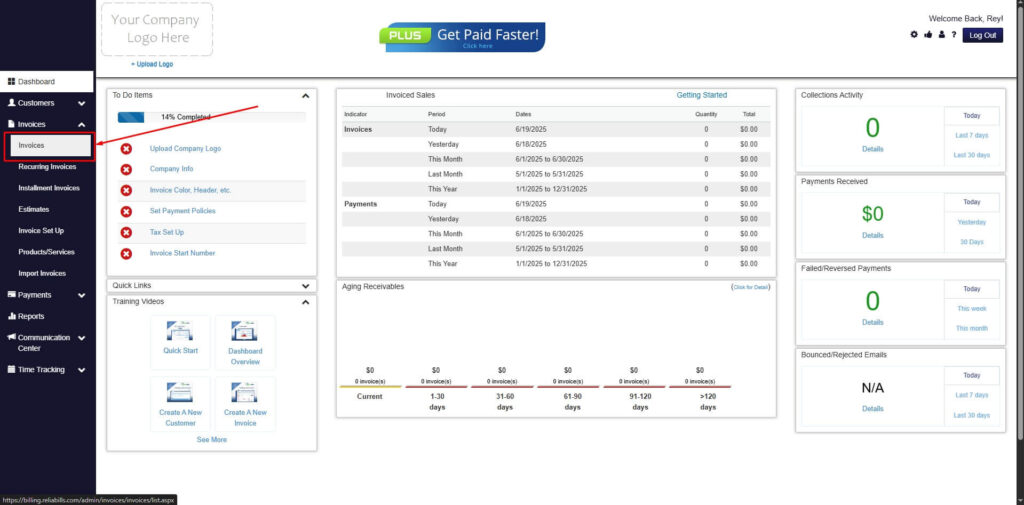
Step 3: Click ‘Create New Invoice’
- Click ‘Create New Invoice’ to proceed.
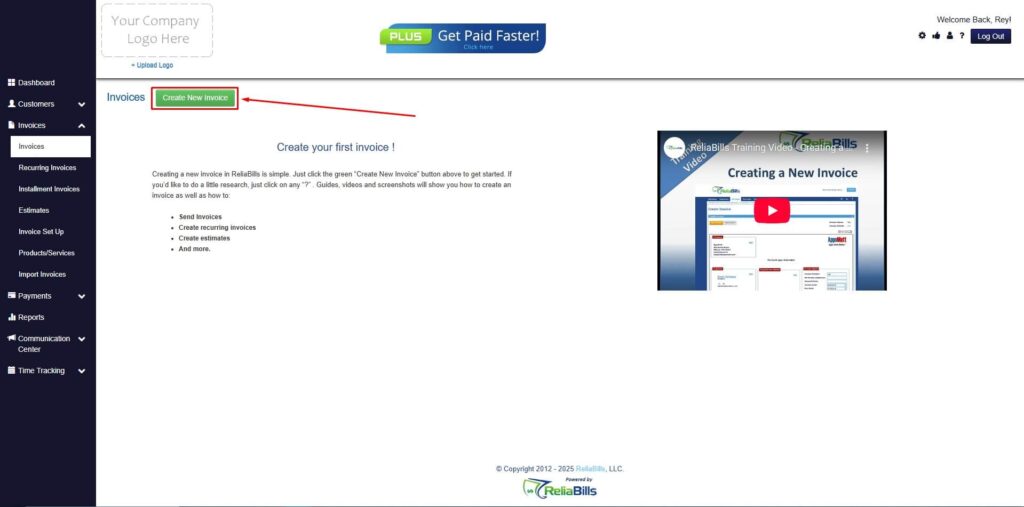
Step 4: Go to the ‘Customers Tab’
- If you have already created a customer, search for them in the Customers tab and make sure their status is “Active”.
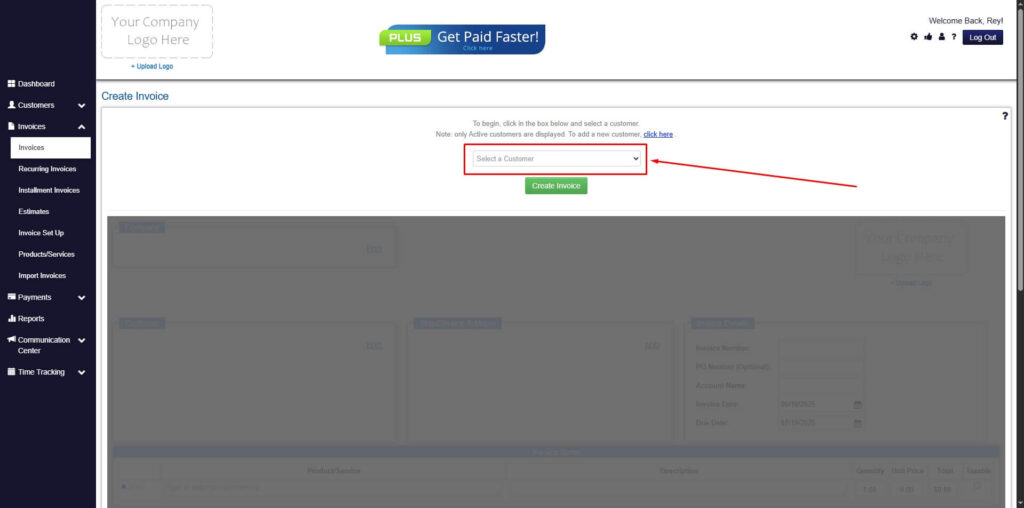
Step 5: Create Customer
- If you haven’t created any customers yet, click the ‘Click here’ to create a new customer.
- Provide the First Name, Last Name, and Email to proceed.
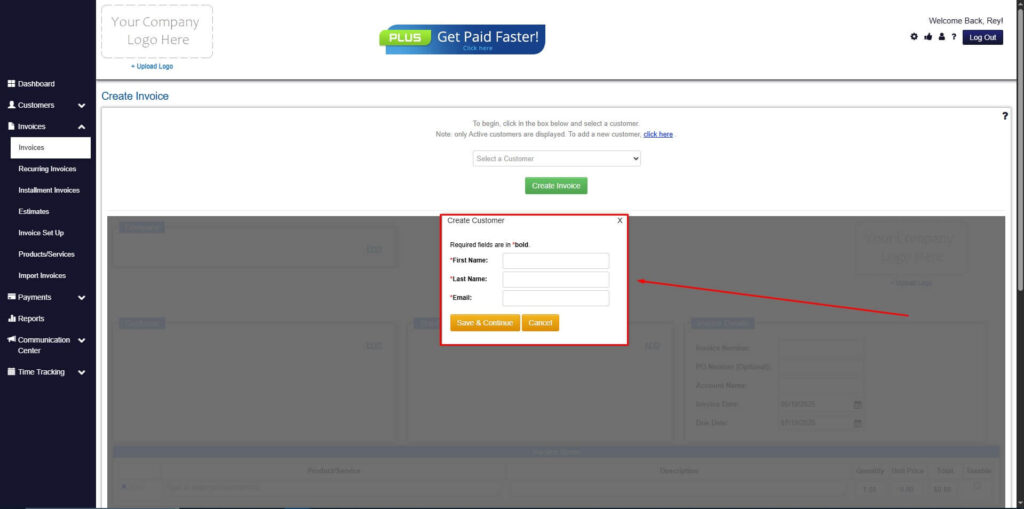
Step 6: Fill in the Create Invoice Form
- Fill in all the necessary fields.
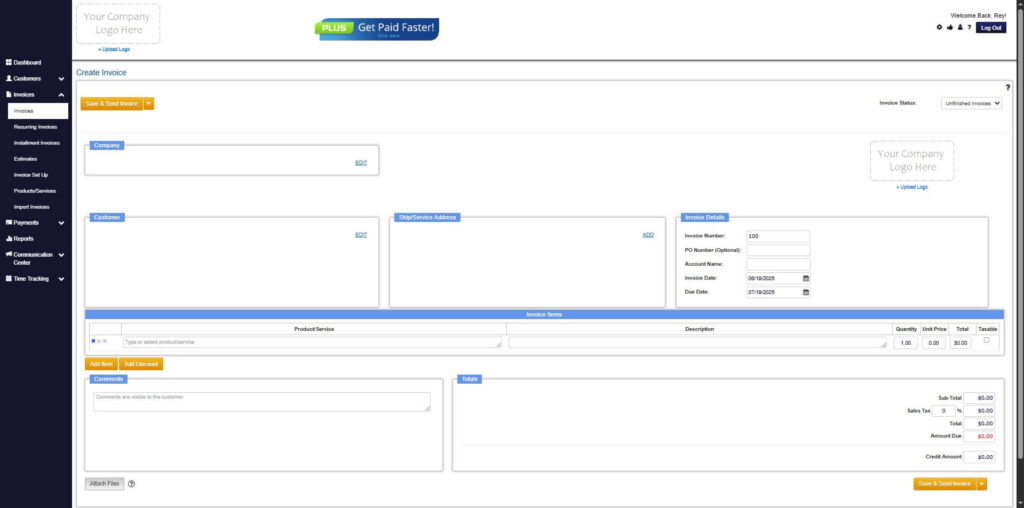
Step 7: Save Invoice
- After filling out the form, click “Save & Send Invoice” to continue.
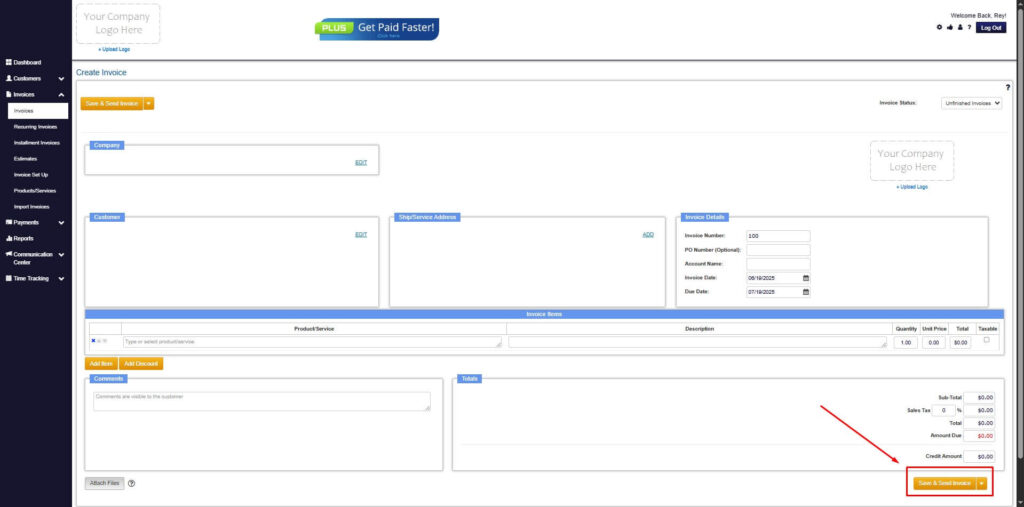
Step 8: Invoice Created
Your Invoice has been created.
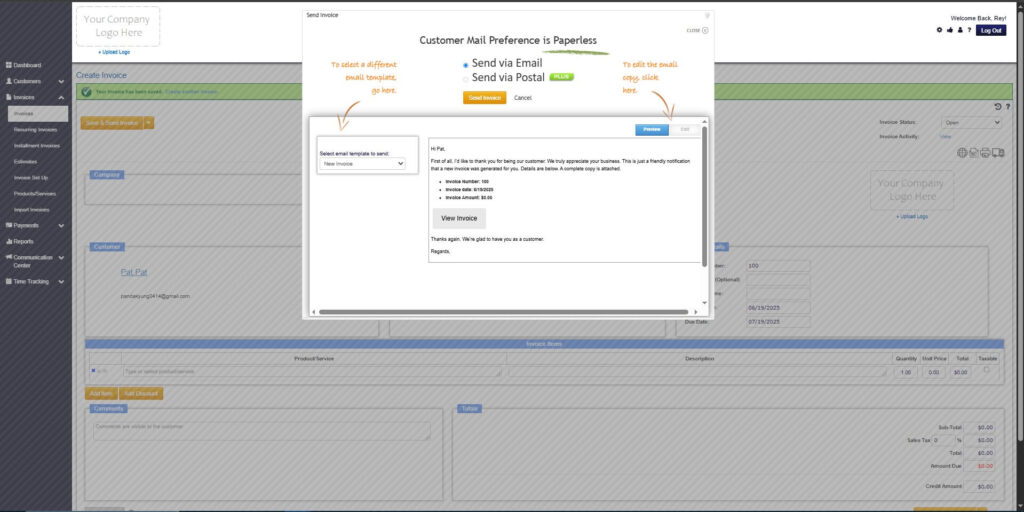
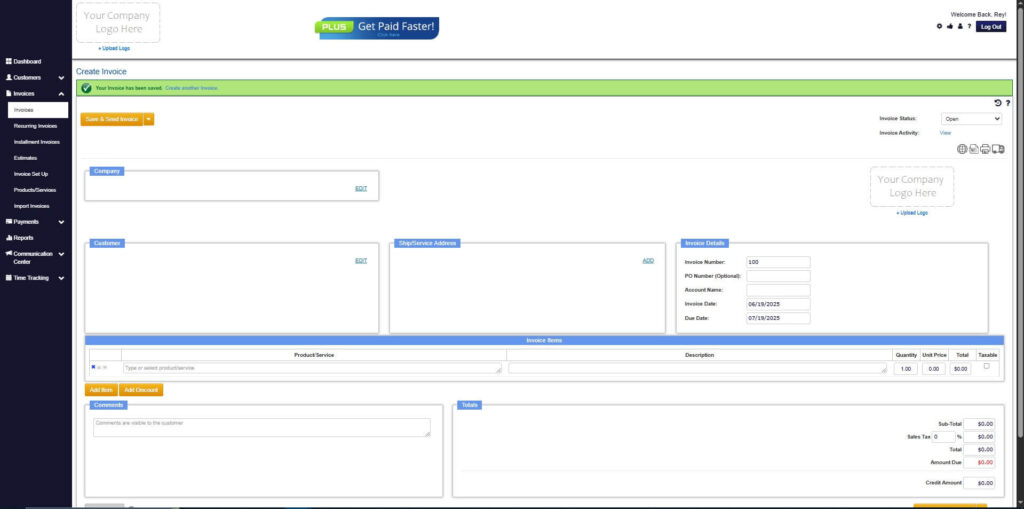
Wrapping Up
A Bill of Lading is an essential legal document in the shipping industry that ensures accountability and transparency in the shipping process. Distinguishing it from an invoice, which primarily serves as a demand for payment from the buyer, is crucial for anyone involved in shipping and trade.
A reliable invoicing system, like ReliaBills, can significantly ease the process of invoicing and payment tracking. It offers a multitude of features designed to streamline payment processes and manage customer information efficiently. By understanding these key aspects, you are better equipped to navigate the complexities of the shipping and trade sector.

